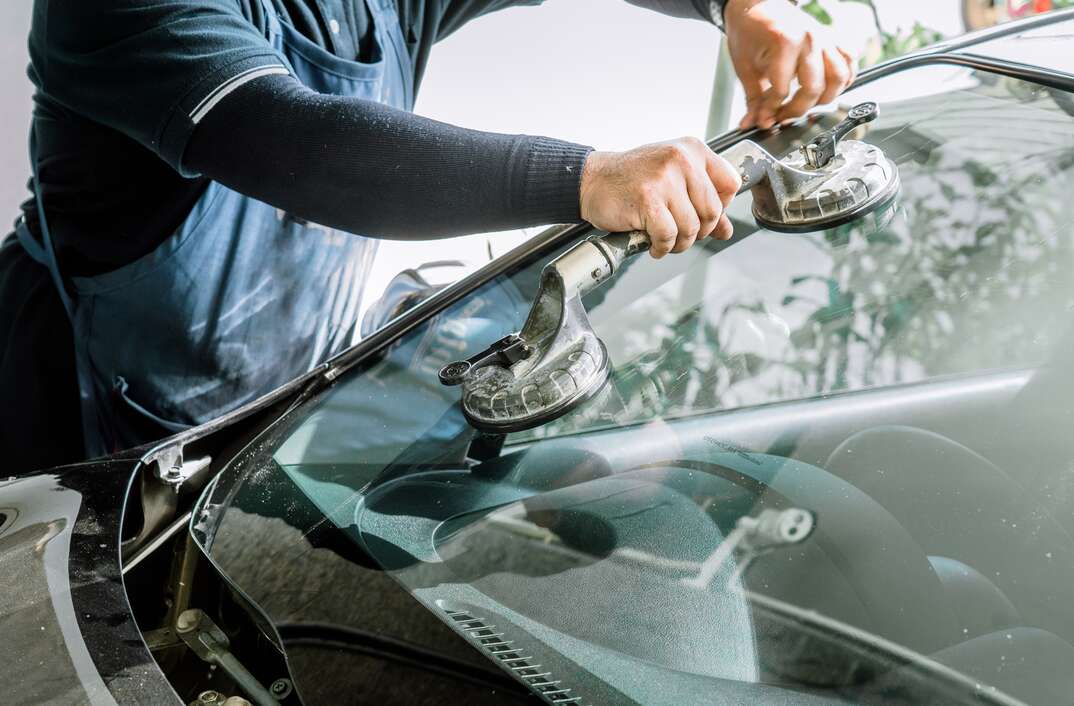What Are Car Windshields and Windows Made Of?

Although you may take your car's windshield for granted, this crucial vehicle part plays an important role in keeping you safe when driving. Besides shielding you from external elements, such as wind and kicked-up stones, auto glass has to give you a clear, undistorted view of the road. It also has to hold up if an impact occurs.
That's why car windows, which are made from soda-lime glass like many commercial glass products, are customized to satisfy the strict safety requirements needed for use in cars, trucks and buses.
What Is a Car Windshield Made Of?
Like your home windows, car windshields are made from soda-lime glass, which consists of 70% silica (which typically comes from sand), 15% soda ash, and 9% limestone, with small amounts of other compounds, such as aluminum oxide or potassium oxide, mixed in. For example, front windshields often contain iron oxide to lightly tint the glass, which may help drivers see better in bright sunlight. However, different types of glass are used for front and rear windshields.
Front Windshields
Early car windshields consisted of two sheets of standard window-pane glass. Unfortunately, they often shattered on impact, leaving passengers at risk for injuries from broken glass.
Today, the front windshield of most cars is made of laminated safety glass, which consists of two outer layers of glass with a plastic laminate, such as polyvinyl butyral in between. Because it’s hard to break and typically only cracks during an impact, laminated glass helps minimize injuries from shattered pieces of glass if an accident occurs. It also insulates your car’s interior from noise for a quieter ride, even on busy highways.
However, the automotive glass industry is constantly striving to improve windshield design. Some car manufacturers now feature Corning's Gorilla Glass in their windshields. Commonly used in cell phones and other electronics, this super-tough glass is clearer and more durable than traditional windshield materials. It’s also exceptionally lightweight, so it improves fuel efficiency.
Rear Windshields
Rear windshields are made from tempered glass, which is at least four times stronger than ordinary glass but breaks into small pieces with a severe enough impact. Tempered glass is also a type of soda-lime glass. However, due to the high melting point and rapid heating and cooling of the manufacturing process, the broken pieces typically don’t have sharp edges. Tempered glass is typically used in rear windshields so that a passenger may break it to escape in an emergency.
Like the rear windshield, the side windows of a car are made from tempered glass. Although tempered glass is strong enough for automotive use, it’s easy to break, so the driver and passengers can escape in an emergency, or a child or pet can be rescued from a locked car. Tempered glass can also be chemically or thermally treated to make it more shatterproof, so it can better handle side impacts without breaking into small pieces.
The Quality of Automotive Glass
Modern automotive glass must comply with Federal Motor Vehicle Safety Standards. However, if you have to replace a car window or windshield, the glass may vary in quality depending on whether it’s made by the original manufacturer or an aftermarket fabricator.
Original Equipment Manufacturer Glass
Because it’s made by the original car manufacturer or a producer approved by the original manufacturer, OEM glass is built to the same specifications as the car’s factory-produced windshield, so it will be the same shape, tint and thickness. It may also display the car manufacturer’s name and logo.
Aftermarket Glass
Aftermarket windshield glass, which is sometimes referred to as original equipment equivalent glass, is made by companies that aren’t licensed by the car’s manufacturer. These businesses can’t legally replicate the OEM glass exactly, so the glass usually differs from OEM glass in shape, tint and thickness. They also won't include the car manufacturer's name or logo. Although aftermarket glass may be more affordable, it may not meet the same quality standards you would find with OEM glass.
Elocal Editorial Content is for educational and entertainment purposes only. Editorial Content should not be used as a substitute for advice from a licensed professional in your state reviewing your issue. The opinions, beliefs and viewpoints expressed by the eLocal Editorial Team and other third-party content providers do not necessarily reflect the opinions, beliefs and viewpoints of eLocal or its affiliate companies. Use of eLocal Editorial Content is subject to the
Website Terms and Conditions.The eLocal Editorial Team operates independently of eLocal USA's marketing and sales decisions.



